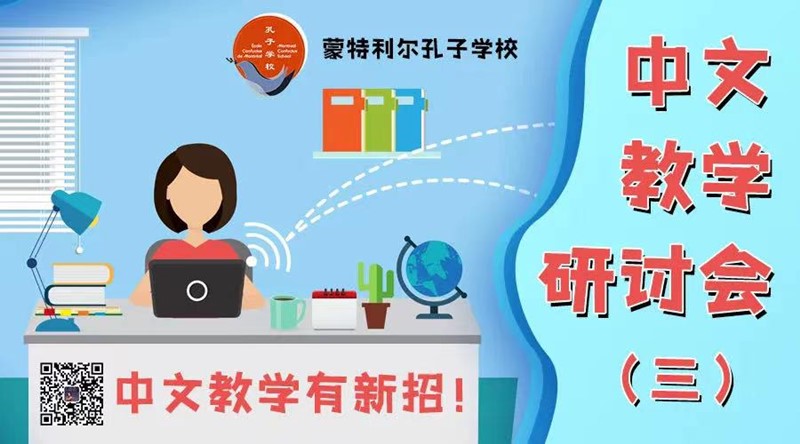【Symbiosis International Media of Canada】
Tempest in Eurasia: Russia, Ukraine and Georgia
H.K. Chang(张信刚)
[Chap 11 in 文明的地圖 (Mapping Civilizations), 2021, Hong Kong]
In recent years, Ukraine’s political scene and the ongoing test of strength between foreign heavyweights have ranked as top news items in terms of their implications for global strategy. Since 2019, even U.S. domestic politics have been impacted.
As of February 2014, events took a sudden turn for the worse: Ukraine’s elected president fled to Russia, and a pro-Western acting president and interim government took power. In March, the Russian Federation incorporated Crimea after a hastily arranged and disputed referendum showed that 98 percent of Crimean voters wished to leave Ukraine and join Russia; and in early April, pro-Russian groups in the two easternmost districts of Ukraine established militias and demanded independence or the right to join Russia.
Surrounded by the Black Sea and the Sea of Azov, the Crimean Peninsula, with its warm-water harbor Sevastopol, holds a commanding position in the Black Sea region. During the 6-10th centuries, Kipchak Turkic tribes continued to settle there and became Crimea's most populous indigenous people. After the Mongol’s mid- 13th century conquest of much of Eastern Europe, Crimea was ruled by its Mongol-Turkic population, known as Crimean Tatars — similar to but different from the more numerous Volga Tatars — for over 400 years.
In the late 18th century, the Russian Empire defeated the Crimean Khanate, at the time a dependency of the Ottoman Empire, and annexed Crimea. Ethnic Russians, Ukrainians and others quickly poured into Crimea. After the October Revolution in 1917, Crimea became a part of the Russian Socialist Republic.
During WWII, Stalin ordered the massive deportation of Crimean Tatars to Central Asia. In 1954, Khrushchev, perhaps attempting to redress what Stalin did to the Crimean Tatars, ordered that Crimea be transferred from Russia to Ukraine. Since then, ethnic Russians have constituted roughly 70 percent of the Crimean population, with Ukrainians, Crimean Tatars and other ethnicities comprising the remainder.
After Ukraine elected Petro Poroshenko, a pro-Western businessman and politician, as President in late May 2014, the easternmost region and the rest of Ukraine slid into a state of partial civil war. Russia ceased national gas exports to Ukraine in mid-June, but the Russian Federal Assembly (DUMA) withdrew its decision empowering president Putin to dispatch troops there, and the Ukrainian government and militias in the east agreed to a ceasefire.
At the end of June, the EU signed a partnership agreement with three former Soviet republics — Ukraine, Georgia and Moldova — extending “zero import tariff” treatment to them. As we entered July, Ukraine’s pro-Western government decided to dispatch troops against armed strongholds in eastern Ukraine. Efforts by France, Germany and Russia to negotiate a ceasefire proved fruitless. The West demanded that Russia immediately rein in the armed Ukrainian rebels, or else they would strengthen sanctions against Russia.
Clearly, when Russia struck back in March 2014 during the Ukraine crisis, its policy decision was clear and its execution resolute. As part of his “rapid reaction force” deployment, Putin delivered a televised speech during which he spoke passionately, citing historical details and portraying the nation’s current standing in a way capable of galvanizing Russian nationalist sentiments. The basis for these feelings is the hegemony of northern Eurasia achieved by the Russians, little by little, over several centuries. But this nationalism and its interpretation of recent history are not convincing either to the mainstream population in Ukraine or to the non-Russian peoples within the borders of the present-day Russian Federation.
Developments in the state of affairs of Ukraine and Georgia are part and parcel of the major powers’ strategic global configuration, a configuration that is inseparable from Eurasian history and reality on the ground. The U.S. seeks to use its naval power to restrict and dominate land-based forces; the EU seeks to extend its influence eastward to a region that the earlier British geopolitical scholar, Halford Mackinder, termed the “heartland of the World Island”, which coincides with the areas where the ancient Silk Road had to pass through, i.e., the Ukrainian-Russian Steppe and Southern Caucasus. Meanwhile, China is promoting the emergence of a “New Silk Road Economic Belt,” and constructing a high-speed railway to replace the camel caravans of yore.
Throughout the eventful situation in recent years, the West staunchly supported the Ukrainian government while condemning Russia and slapping it with sanctions. For its part, Russia declared that it was obligated to protect ethnic Russians wherever they might be, and Putin accused the West of applying a double standard on the issue of national sovereignty.
During this process, a near farce took place in the interlude.
Mikheil Saakashvili, who ascended to the presidency after he successfully led the “Rose Revolution” in Georgia, lost popular support shortly afterwards. Accused of corruption and abuse of power, he chose exile in Ukraine. With the help of President Poroshenko, he became a Ukrainian citizen. Moreover, he was appointed governor of Odessa, an important state in south Ukraine.
But the farce continues. Within two years, Saakashvili had a falling out with his old buddy Poroshenko. This time the Georgian left to take up residency in . . . Poland. Then in 2019, just before the Ukrainian presidential election, Saakashvili led a small contingent of his followers to sneak into Ukraine, and positioned himself as a potential candidate for the presidency, thereby setting the stage for yet another round of drama.
After all his performances, surely it is no longer difficult to determine whether this politician --- who claims to be for democracy and rule of law --- is a clown or a martyr?
Shared Roots
Actually, Ukrainians and Russians share the same origins. During Imperial Russia’s period of expansion (1650-1900), many Ukrainians participated and acquitted themselves gloriously. One could compare this to the role many Scots played in the expansion of the British Empire. However, ethnic, linguistic, and historical differences between the Russians and Ukrainians are less marked than those that distinguish the Scottish from the English.
The northern shore of the Black Sea — home to the steppes that traverse the northwest part of the Eurasian continent, i.e., modern-day Ukraine — is the birthplace of the world’s Indo-European languages.
About 4,000 B.C.E., tribes speaking a “proto-Indo-European” tongue resided there, though their traces have since disappeared. Some 5000-3,000 years before our era, they migrated outward in three waves, eventually spreading throughout what are today Europe, Iran, Afghanistan, Pakistan and well over half of India.
The earliest settlers in the Tarim Basin in today’s Xinjiang and those who lived a nomadic existence in the Hexi Corridor in Gansu, the Yuezhi, migrated there from Ukraine via the Eurasian Steppe some 4,000 years ago. Their “Tocharian language,” as it is labelled by some linguists, shares a similar grammar and some vocabulary with the language of the Hittites who ruled Asia Minor 4000–3500 years ago, as well as the Celtic languages of what are now Ireland, Wales and Scotland.
It was about 6,000 years ago that the “Indo-Aryans” on the Ukrainian Steppe first tamed the horse, making cavalry the fiercest mobile fighting force prior to the tank. Mastery of horses stimulated communications on the Eurasian continent, and also endowed steppe nomads with a military advantage. In the first half of the 13th century, the Mongols exploited this superiority to conquer the Slavs who lived on the northern shores of the Black Sea, ruling them for the next 250 years.
While the Slavs do speak an Indo-European tongue, it is not a direct descendent of those spoken by “proto-Indo-European” tribes. In fact, during the era of the Greek city-states, the northern shores of the Black Sea served as Athens’ granary; the geographically prominent Crimea was long ruled by the Greeks.
Beginning with the 6th century, the forests and plains of East Europe were inhabited by Eastern Slavs who occasionally came into contact with the Norman Vikings of the Baltic Sea region. In the 9th century, a group of Vikings followed the Dnieper River southward, first ruling the Eastern Slavs there and then gradually integrating with them. In what is today Kyiv, the capital of Ukraine, they established a feudal principality known as “Kievan Rus.”
In the late 10th century, the rulers of Kievan Rus commanded their subjects to convert to the Greek Orthodox faith. This meant they also adopted the Cyrillic Alphabet that Greek missionaries had created for Slavic languages. The establishment of the principality, conversion to Greek Orthodoxy, and use of the new script all marked the commencement of the recorded history of the Slavs. This is the foundation of a shared civilization and national origins of today’s Russians, Ukrainians and Belarusians.
Turkic, Norman, Slavic and Mongolian Peoples
From the late sixth century onwards, Turkic tribes migrated westward from the Mongolian Plateau in large numbers. In the 8th century, some of these tribes scattered among the Ural Mountains, the Volga River and along the northern shore of the Caspian Sea. Among them, an alliance of Khazar tribes grew quite strong in the 9-10th centuries. Its turf extended to the entire northern shore of the Black Sea — modern-day Ukraine. Unlike other Turkic speakers, the Khazar did not become followers of Islam or Christianity. They instead chose Judaism, and functioned as a buffer between the Arab and Byzantine Empires.
During this period, the Norman Vikings proceeded south from the Baltic Sea and entered the region north of the Black Sea. In order to counter the power of the Khazar, they joined with the Slavs to establish the Kievan Rus principality, and eventually merged with them.
The Khazar went into decline in the 12th century, but another horde of Mongols on horses came from the east in the 13th century. They quickly conquered Kievan Rus and other Slavic alliances. The commander of this great army was Batu Khan, grandson of Genghis Khan. He proceeded west along the Eurasian Steppe, conquering and incorporating the Turkic-speaking Kipchak.
In the years before and after 1240, his troops plundered Kyiv, Moscow, Vladimir and other Slavic cities, and destroyed Kievan Rus. This marked the start of separate paths of development for the Ukrainians, Russians and Belarusians.
The Grand Principality of Moscow and the Kipchak, Crimean and Kazan Khanates
In 1241, Batu had led his conquering troops as far West as the Danube River Basin, and was closing in on the Adriatic Sea. Just then the Great Khan Ögedei passed away, and Batu decided to lead his troops back east in order to compete for the position of the Great Khan. But on his way he learned that his cousin Güyük had already succeeded Ögedei, so Batu built his capital at Saray on the lower Volga, and established the Kipchak Khanate (commonly known in Europe as the “Golden Horde”) that ruled much of Eastern Europe and what is now Kazakhstan.
In the subsequent three centuries, the Kipchak Khanate and other Mongol Khanates that split from the Kipchak Khanate all promoted east-west interaction across the Eurasian Steppe. This fostered north-south communications between the northern steppe and Asia Minor, the Caucasus, Persia and agricultural regions in Central Asia, stimulating more frequent trade and cultural interaction throughout Eurasia. During this period, the Mongols gradually merged with the Islamized Turkic tribes located north of the Black Sea, evolving into what the Slavs collectively label “Tatars.”
In the middle of the 15th century, a Tatar clan founded the Crimean Khanate, elevating a 11th-generation grandson of Genghis Khan as its Khan. Another group of Tatars, also led by a 10th-generation grandson of Genghis Khan, founded the Kazan Khanate in the middle reaches of the Volga River. At that time, the Grand Principality of Moscow founded by Russians after the destruction of Kievan Rus was still a vassal of the Kipchak Khanate. During the 15-16th centuries, the Crimean and Kazan Khanates and the Grand Duchy of Moscow were all granted titles of nobility by the Kipchak Khanate. They paid tribute to it, and regularly intermarried with it. Later, the Grand Principality of Moscow grew stronger and christened itself the “Tsardom of Russia.” In its turn, it also conferred titles upon Tatar princes and other high nobles, and often invited Tatar nobles to serve in the Moscow palace.
During the 15-18th centuries, the Crimean Khanate was an important force in Eastern Europe. They often invaded and looted regions inhabited by Slavs, particularly to take slaves for sale to the great power of the era, the Ottoman Empire. At the time Crimea was the slave trade center of Europe; because the Quran prohibits enslaving Muslims, there was strong demand for Christian slaves among Muslims across the Middle East.
The Ottoman’s dominion extended over the Crimean Khanate, the Caucasus, and most of the territory around the Black Sea during the 17-19th centuries. Russia also grew strong during this same period. It vanquished many regions, and continually expanded to the east and west. During its expansion, Russia established Cossack corps — comprised mainly of Ukrainians and Poles — and permitted them to establish autonomous local governments in newly conquered territory.
The coat of arms of the Tsardom of Russia (later christened Imperial Russia) was a double-headed eagle; one looking eastward, the other westward, symbolizing that Russia faces the entire Eurasian continent. Significantly, the term “tsar” comes from the Roman Empire’s title, “Caesar,” for after the Ottomans destroyed the Byzantine Empire in 1453, Russia claimed for itself the role of the latter’s successor. It is evident that even before it became truly powerful, Russia already possessed great ambition and exploited it to inspire its subjects.
Proud but Isolated Georgia
Like the Ukraine, Georgia has also recently been designated as a newfound “partner” by the EU. This country covers 70,000 square meters and numbers just five million inhabitants. Georgian does not belong to the Indo-European family of languages. The Georgians are indigenous to the Caucasus, unrelated to any of the peoples mentioned previously, and they adopted Christianity and created their own script at least five hundred years before the Slavs. These facts have combined to endow this people with a strong sense of pride.
The bulk of Georgia’s territory lies to the south of the Greater Caucasus Mountains. To the north are autonomous republics in the Russian Federation, including those which have seen frequent terrorist incidents in recent years: Ingushetia, Chechnya and Dagestan.
I have traveled in Georgia, entering southern Georgia via a land route from Armenia and exiting from the east for Azerbaijan. The Georgian border guards were neatly groomed, courteous and did things by the book. Border guards in Eastern Europe and Western Asia are no match when it comes to the latter; perhaps Georgia’s level of civility is one reason why the EU selected it for partnership.
Tbilisi, Georgia’s capital, is located on both sides of the Mtkvari River valley. The river still flows through the city founded 1500 years ago, and the mountains still tower over it on either side, but Tbilisi has been ravaged by war 29 times! Arabs, Turks, Mongols, Persians and Russians have all taken turns pillaging and burning it. Yet each time the city was rebuilt.
The Tbilisi I encountered is a European-style city, and almost all the buildings were newly constructed or rebuilt over the last two centuries. The presidential palace, the new bridge spanning the Mtkvari, and the Sheraton Hotel radiate a dynamic, 21st-century ambience. Strolling through the Old City reconstructed after the 18th century, I found displayed in antique stores historical reminders that do not require a written explanation: Persian pen cases, Ottoman jewelry, and Russian dolls. These common items evoked for me the unique history of the city, a history for the most part engendered by the city’s location rather than actions taken by the Georgians themselves.
But there have been exceptions. At the end of the 18th century, in order to contend with pressure from both the Persians and Ottomans, the Georgian king sought protection from the Russians. That was the equivalent of opening the door to a wolf, and henceforth Georgia figured upon Imperial Russia’s map. Even the Georgian church — with a history five hundred years longer — ended up in the embrace of the Russian Orthodox Church.
In 2003, thirteen years after independence from the Soviet Union, U.S.-educated Mikheil Saakashvili led a crowd of citizens, roses in their hands, to storm government buildings and seize power. Then-president and former Soviet Minister of Foreign Affairs Eduard Shevardnadze was forced to vacate his post, and Saakashvili — who took a totally pro-Western line — became president. This was Georgia’s famous “Rose Revolution.”
On the opening day of the 2008 Beijing Olympics, Saakashvili ordered the army to attack South Ossetia, which had until then enjoyed de facto autonomy, and this incurred the wrath of the Russians; the Russian army easily defeated the Georgians as the West looked on. Today, only Russia and a handful of other countries recognize the sovereignty of South Ossetia and another Georgian autonomous region, Abkhazia.
Without question, Georgia’s most famous personality is Joseph Stalin. I once visited the Stalin Museum located in Gori where he grew up. The museum is a stately three-story building right next to the little house where Stalin came into the world. Many historical photos and items are on display. Among them, the most famous is one that captures Lenin flanked by Stalin on the left and Trotsky on the right. Lenin was a Russian reportedly of part Tatar descent; Stalin was Georgian, while Trotsky was Jewish. This photo bears witness to the fact that the Soviet Revolution was erected on the foundations of multi-ethnic Imperial Russia.
Outside the museum stood a statue of Stalin on a high pedestal. I took two photos in front of the statue at 17:00 on June 22, 2010. Just three days later at 03:00, the statue was quietly removed, according to a Reuters’ report.
The son of a cobbler, Stalin was a former seminary student and professional revolutionary who once ruled the Soviet Union and headed the international communist movement for almost thirty years. During World War II, Stalin led the Soviet Union’s “Great Patriotic War.” Because of his leadership during the war, his memory is still cherished by many Russians. His rejection of Hitler’s proposal to hand over a German marshal captured by the Soviets, in exchange for a Soviet captain, Stalin’s own son, remains one of the legends that made him famous. He employed extremely brutal methods to purge dissidents, however, and for this he has been spurned by history.
Indeed, many of Stalin’s lesser-known decisions continue to impact the lives of tens of millions of people even in our day.
For example, Stalin was the Soviet Union’s first Commissar for Nationality Affairs. Born and raised in the Caucasus with its complex relations between different peoples, he was naturally familiar with ethnic issues in the Soviet Union. Although he agreed with Lenin’s basic policy that ethnic minorities should enjoy autonomy in regions where they were concentrated, in order to “divide and rule,” he intentionally drew boundaries that group several different ethnicities. Today, the root of ethnic conflicts in several Central Asian countries can be traced back to Stalin’s approach, even clashes in 21st-century Georgia and Ukraine.
Ukraine’s Destiny
Now let’s return to Ukraine. Due to its location and other factors, in the late 15th century while Moscow was gaining in strength, Ukraine was ruled by Roman Catholic countries such as Lithuania and then Poland. As a result many Ukrainians converted to Roman Catholicism. This is the origin of the division of Ukraine into eastern and western regions, a split with a history of some five centuries.
After 1650, the Ukrainians allied with Russia in order to resist the Polish. Soon thereafter, Ukraine was divvied up between Russia and Poland, with the eastern portion incorporated into Tsarist Russia, commencing its Russification. As Russia continued to expand, virtually all of Ukraine eventually came under Russian control, except a small area ruled by Austria. Long-term Russification gradually assimilated eastern Ukraine, but since most of Ukraine’s population in the west was influenced by Poland, Austria and also by the Roman Catholic Church, it remained dissatisfied with Russian rule.
After the October Revolution in Russia, once again Ukraine was carved up: western Ukraine went to Poland while the east reverted to Russia. When the Soviet Union was inaugurated, Ukraine, again with adjustments in territory and population, was among the first republics to join, although many Ukrainians were not pleased with the new arrangement. During World War II when the Nazis invaded Ukraine, many western Ukrainians treated the Germans as liberators and welcomed the invaders with open arms.
Following World War II, the two camps led by the U.S. and the Soviet Union maintained the Cold War for 45 years. The Americans implemented a policy of encirclement and containment against the Soviet Union, and supported opponents living within its borders. This approach has been used throughout human history, and is the easiest way for domestic opponents to gain support from abroad. Throughout the Cold War, many anti-communist Ukrainians in the West publicized their opposition to the Soviet Union, and the U.S. continuously financed a Ukrainian government-in-exile.
After the dissolution of the Soviet Union, Russia descended into difficulties that could not easily be remedied. The Warsaw Pact disbanded, and several original members — including East Germany, Czechoslovakia and Poland — immediately made plans to join NATO, so NATO loomed at Russia’s door. Of the 15 former Soviet republics, the three Baltic countries were originally considered part of the West. But now, even Ukraine, the second biggest, desired EU membership and wished to join NATO. Although there were no public statements by either the U.S. or Russian just before or after the demise of the Soviet Union, the Russians have claimed, with confirmation by some participants at the time, that the U.S. had agreed not to increase the number of member states of NATO.
During the Yeltsin years, the president was totally unable to cope with these issues as he drowned his troubles in liquor. This gave Ukraine some time in which it could maneuver freely. After Putin came to power, however, Russian power was somewhat restored, and he excelled at managing and even exploiting international political developments. But even so, Russia came up with the short end of the stick on two occasions: Georgia’s “Rose Revolution,” and Ukraine’s “Orange Revolution.”
The internal strife in Ukraine that commenced in autumn 2014 is a reflection of a very significant strategic game on the global stage. Regarding the “Ukraine question,” this time around Russia appears determined not to come out the loser. So Ukraine is destined to become the venue for a tug-of-war between the EU and Russia, and may well become the board for a global chess-game involving the strategies of several heavyweights.
Pawns in a Strategic Game: Ukraine and Georgia
The U.S. is the world’s most powerful country. Its emblem is an American Bald Eagle, whose claws clutch an olive branch and a bundle of arrows. Accordingly, the U.S. has historically pursued a foreign policy that combines soft and hard power, and seeks solutions that are both just and beneficial to its national interest.
It is in the ancient homeland of the Indo-European languages — Ukraine, and the home of Caucasians, Georgia, that Russia’s double-headed eagle and the American bald eagle have rather different strategic thinking and master plans.
Russia’s current strategic goal is to integrate its Soviet-era Asian hinterland with the European frontier, attract European capital and talent with the level of modernization it has already achieved, and exploit its overall national power to meet the challenges posed by the U.S., EU or other countries. Russia definitely does not want to see Ukraine and Georgia become outposts of NATO and the EU at its frontier, and is even less keen to see control of its network of Ukraine-based, EU-bound oil and natural gas pipelines under threat.
Russia cannot afford failure at its front door, nor is it willing to wage war there. One fortuitous solution for Russia would be a Ukraine where its eastern and western regions take their own paths, while restraining one another in a loose federal system. Meanwhile, Russia’s Georgian strategy is to continue to suppress the latter, ensuring it cannot effect a real connection with the distant EU.
The U.S. global strategy is rather different. It seeks to use its geographical advantage of facing both the Pacific and the Atlantic, in conjunction with its current overall national strength, to dominate future trade and economic development on both sides of the Atlantic and Pacific, and thereby prevent any Eurasian player from emerging to challenge its sea-based hegemony over the Eurasian landmass. If problems frequently erupt in Russia’s neighborhood, this is in line with America’s strategic interests.
The “New Silk Road Economic Belt” concept advocated by China, however, is not in sync with America’s global strategy. Does this mean that China and Russia will join forces to deal with the U.S. (and the EU)? I don’t foresee such a turn of events, because the pair lack mutual trust and overlapping interests.
Freedom, democracy and human rights are values long trumpeted by the U.S. Since a majority of the residents of western Ukraine are willing to damage Ukraine-Russia relations in their pursuit, the Americans will no doubt wholeheartedly support them.
As long as a considerable number of Ukrainians are keen to join the EU, the U.S. and EU will naturally welcome their entry. If long-term domestic friction causes Ukraine’s factories to shut down, farmland to lay barren and energy supplies to fall short, all of this may give Germany a headache — but it won’t unduly bother the Americans.
If Ukraine’s leaders cannot stabilize society and eliminate the barriers between the country’s east and west, then Ukrainians — regardless of their location — cannot emerge as winners in this gamble. As for the Caucasus to the east of the Black Sea, if the Georgian leaders prove incapable of overcoming the destiny assigned them by their geography, then the Georgians may remain proud, but inevitably isolated too.
Tough but Vulnerable
The former Soviet Union had many weak points, the key one being its inability to fully integrate the territories and many peoples that came with their conquest; and secondly, the inefficiency of the nomenklatura and its monopolization of power. In 1985, just as Mikhail Gorbachev initiated perestroika — the radical restructuring of the Soviet economic and political systems — I visited the Soviet Union and experienced first-hand the mediocrity and ineptness of the bureaucracy.
Not long after, I came across an article by an American scholar predicting that the Soviet Union would break up because of discontent among the peoples of the Caucasus and Central Asia. At the time it struck me as wishful thinking, but a few years later history provided its own answer.
After the Soviet Union’s implosion, ethnic conflicts markedly diminished. But Russia, now a federation, still suffers from ethnic problems. The states of Dagestan, Chechnya and Ingushetia in North Caucasus are obvious cases in point. Since Putin took power, ethnic conflicts have not been handled well. No real progress has been made in reducing the bureaucracy’s inefficiency or loosening its stranglehold on power.
In addition, as an open society with free flow of information, a considerable number of Russian citizens aspire to the Western lifestyle and social system, and welcome Russia’s “Europeanization.” In fact, this mindset began to insinuate itself in society back during Peter the Great’s reign at the outset of the 18th century, so it’s hardly a new phenomenon.
At a time when Russia opposes a West that is drawing ever closer, Russia finds itself short on stamina. Although Putin’s government has obtained nearly unanimous domestic support for its stand on the “Ukraine question” since 2014, that doesn’t guarantee majority approval in the long run. Yes, I’ve visited Russia six times over the last two decades and I’ve seen the huge social changes with my own eye. But, in the grand scheme of things, I consider Putin’s success in Crimea only a moderate victory, not a major turning point.
Russia currently relies mainly on energy exports to prop up its economy, but the U.S. has entered the ranks of the oil-exporting countries, and begun aggressive exploitation of shale gas via fracking. Meanwhile, energy-saving know-how is maturing in Western Europe, and provision of energy via the Mediterranean has increased significantly. Therefore, Russia’s use of oil and gas supply as an effective weapon will gradually diminish.
Even Western countries that support Ukraine and Georgia in breaking with Russia find it difficult to forecast accurately the actual outcome.
The EU does possess the means to formulate strategy regarding this pair of would-be partners. However, willingness to implement it suffers from a lack of unanimity. Brexit represents an incredible fracture of Europe. The euro’s own problems will make the EU leadership think twice before proceeding, and therefore the EU will not take bold steps to help Ukraine get through what is already a very serious economic situation. And it is even less likely to offer concrete aid to an all-too-distant Georgia.
During the 1961 Cuban Missile Crisis, president John F. Kennedy loudly warned off the Soviet Union’s Khrushchev, and attained total victory as a result. Kennedy even flew to Berlin to make himself heard; less than 30 years later, the Berlin Wall fell.
Indeed, one-third of the world’s GDP was produced by the U.S. back then, but today that figure has dropped to one-fourth, while the U.S. debt burden has multiplied many times over. After decades of huge fiscal deficits, coupled with continuous wars in Afghanistan, Iraq and indirectly in Libya and Syria, U.S. financial strength has markedly deteriorated. The unfair distribution of economic resources exposed by the financial tsunami in 2008-2010, and a substantial increase in election campaign costs, has generated severe doubts — a new-fangled phenomenon —among many Americans concerning the country’s social justice and election system.
Additionally, long-term prosperity and the wastefulness and overly comfortable lifestyle that it has provided all social classes cannot be easily altered; the domestic and international agendas advocated by the conservative Christian fundamentalists in the U.S. make it difficult for any government to please them. Therefore, the social and economic forces that sustained U.S. global dominance are gradually changing.
When two strong men face off, one shouldn’t forget that each has his own specific pressure points. It’s not at all clear who will emerge victorious.
When I went to lecture in Ukraine in 2011, former prime minister Yulia Tymoshenko was in prison, a situation that was a source of much argument in society. I spoke with some young Ukrainians about this. Whether they lived in the eastern or western part of Ukraine, and spoke Ukrainian or Russian at home, they all hoped for an independent and peaceful country with corruption-free officials. If the U.S., EU and Russia do not agree on divvying up Ukraine again, then it is the next generation of Ukrainian citizens who are most entitled to say what they want for the future of their country.
Eurasia was the first to domesticate the horse, and traditionally offered good access to myriad destinations. Why can’t it once again serve as a key artery facilitating east-west trade between Europe and Asia? [End]
Author biography:
 CHANG Hsin-Kang (H. K. Chang)
Professor H.K. Chang received his B.S. in Civil Engineering from National Taiwan University (1962), M.S. in Structural Engineering from Stanford University (1964) and Ph.D. in Biomedical Engineering from Northwestern University (1969).
Having taught at State University of New York at Buffalo (1969-76), McGill University (1976-84) and the University of Southern University (1984-90), he became Founding Dean of School of Engineering at Hong Kong University of Science and Technology (1990-94) and then Dean of School of Engineering at the University of Pittsburgh (1994-96). Professor Chang served as President and University Professor of City University of Hong Kong from 1996 to 2007.
Since his retirement, Professor Chang has taught general education courses at Tsinghua University, Peking University, Shandong University, Shanghai Jiaotong University,
China-Europe International Business School and Bosphorus University in Istanbul.
Besides being President Emeritus of City University of Hong Kong, he is an Honorary Professor at Peking University, Tsinghua University and several other major universities in China.
Professor Chang has published over 100 research articles and two research treatises in biomedical engineering and holds one Canadian patent. In addition, he has published 13 non-scientific books in Chinese and 2 in English, mainly on education, cultures and civilizations. His academic interests now focus on cultural exchanges across the Eurasian landmass, particularly along the Silk Road.
Professor Chang is a Foreign Member of Royal Academy of Engineering of the United Kingdom and a Member of the International Eurasian Academy of Sciences.
He was named by the Government of France in 2000 to be Chier dans L’Ordre national de la Légion d’Honneur, decorated in 2009 as Commandeur dans l’Ordre des Palmes académiques, and was awarded a Gold Bauhinia Star by the Hong Kong SAR Government in 2002.
Professor Chang served as Chairman of the Cultural and Heritage Commission of Hong Kong (2000-2003), member of Hong Kong’s Council of Advisors on Innovation and Technology (2000-2004) and of Judicial Officers Recommendation Commission (1999-2005).
He is currently an independent non-executive director of Hong Kong Telecom Trust and Hang Lung Properties, Ltd.
CHANG Hsin-Kang (H. K. Chang)
Professor H.K. Chang received his B.S. in Civil Engineering from National Taiwan University (1962), M.S. in Structural Engineering from Stanford University (1964) and Ph.D. in Biomedical Engineering from Northwestern University (1969).
Having taught at State University of New York at Buffalo (1969-76), McGill University (1976-84) and the University of Southern University (1984-90), he became Founding Dean of School of Engineering at Hong Kong University of Science and Technology (1990-94) and then Dean of School of Engineering at the University of Pittsburgh (1994-96). Professor Chang served as President and University Professor of City University of Hong Kong from 1996 to 2007.
Since his retirement, Professor Chang has taught general education courses at Tsinghua University, Peking University, Shandong University, Shanghai Jiaotong University,
China-Europe International Business School and Bosphorus University in Istanbul.
Besides being President Emeritus of City University of Hong Kong, he is an Honorary Professor at Peking University, Tsinghua University and several other major universities in China.
Professor Chang has published over 100 research articles and two research treatises in biomedical engineering and holds one Canadian patent. In addition, he has published 13 non-scientific books in Chinese and 2 in English, mainly on education, cultures and civilizations. His academic interests now focus on cultural exchanges across the Eurasian landmass, particularly along the Silk Road.
Professor Chang is a Foreign Member of Royal Academy of Engineering of the United Kingdom and a Member of the International Eurasian Academy of Sciences.
He was named by the Government of France in 2000 to be Chier dans L’Ordre national de la Légion d’Honneur, decorated in 2009 as Commandeur dans l’Ordre des Palmes académiques, and was awarded a Gold Bauhinia Star by the Hong Kong SAR Government in 2002.
Professor Chang served as Chairman of the Cultural and Heritage Commission of Hong Kong (2000-2003), member of Hong Kong’s Council of Advisors on Innovation and Technology (2000-2004) and of Judicial Officers Recommendation Commission (1999-2005).
He is currently an independent non-executive director of Hong Kong Telecom Trust and Hang Lung Properties, Ltd.
Editor: Xian Hu
——广告——

点击图片见详情







欢迎关注加拿大共生国际传媒微信平台
欢迎惠顾广告!
联系电话:胡宪 514-246-3958,胡海 010-15901065716
